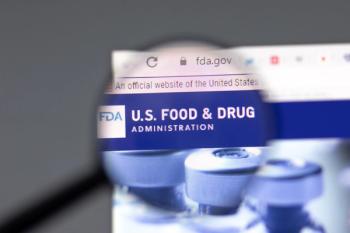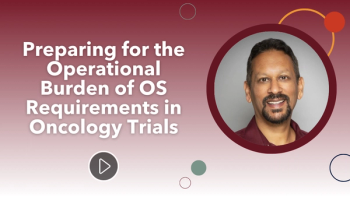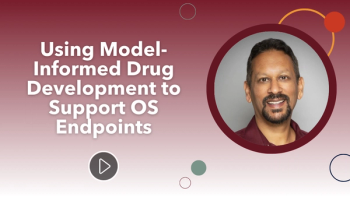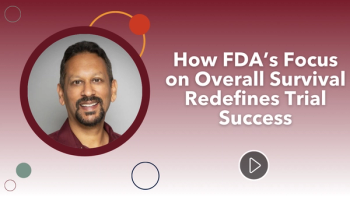
- Applied Clinical Trials-11-01-2009
- Volume 0
- Issue 0
Health Issues Raise EU's Regulatory Profile
Health concerns require EU regulators to become more involved in the politics of health care.
European Union health ministers and health regulators have suddenly become more important. That's one of the side effects of the H1N1 pandemic. In the broad scheme of European politics, health has never counted for much—largely because the EU member states have never relinquished much of their national power over health policy, so EU competence is rather limited.
Peter O'Donnell
But now that Europe's population appears to be faced with a real health threat, these hitherto shadowy politicians are emerging into the European limelight. On October 12, health ministers held an extraordinary meeting of what is known as the EU Health Council—extraordinary because it normally meets only once or twice a year, and doubly extraordinary because it was the second such extraordinary meeting in just a few months.
It's also good news for the European Union itself, always hungry to demonstrate its merits. The member states are showing an unprecedented degree of interest in coordinating their actions in an area they have usually jealously guarded as their own prerogative. Twenty five of them took an active part in the discussions. They are keen on sharing information, swapping experiences, harmonizing their communications with health professionals and the public, cooperating in research, and even pooling their stocks of vaccines.
Five of the EU's smaller member states have not secured supplies of the three vaccines so far authorized—and have no experience of public procurement of vaccines. But they are on the point of issuing calls for tenders, with some support from the EU to maximize their negotiating power with suppliers. The European Commissioner for Health, Androulas Vassiliou, proudly announced that the EU has helped them develop an approach that stands a better chance of making themselves heard with drug manufacturers that tend to focus on regular customers in larger countries.
Meanwhile, mechanisms are being set up to share where there are shortfalls, particularly to ensure vaccination of health care workers. "Everyone agrees that we need to go forward together," said Vassiliou after the meeting on October 12.
The threat of H1N1 has done more to raise the public profile of the EU as an important player in medicines provision than years of diligent but low-key public relations by its official spokespeople. Nowadays in Europe, people with no connection to health care—other than as potential patients—can be heard discussing the EU's central authorization procedure, accelerated approval, the need for more focused clinical trials, or risk/benefit ratios.
The reason is simple. Swine flu has provided the first opportunity for making use of specific EU legislation that provides for flexibility on data requirements and accelerated authorization of vaccines once WHO has declared a pandemic. So all eyes have been fixed on the roles—and reflections—of the European Medicines Agency (EMEA), the European Centre for Disease Control (ECDC), and the European Commission, which have, as a consequence, acquired an unprecedented currency. And the political masters in health ministries around Europe are also basking in the reflected glory of this newfound sense of common purpose.
The health ministers conclusions from their meeting in October recognize "the need for the member states to take all appropriate measures to ensure the most efficient protection of citizens, based on the most recent scientific evidence and drawing on consultations at the European level and with the WHO, and taking account of developments in the epidemiological situation."
Ministers agreed that they should assure some degree of coordination of their public information and communication campaigns. Conflicting messages should be avoided, they said, and there should be "continuous trust-building and sharing of key lines of messages to the media, in order to minimize possible unwanted social and economic consequences."
The commitments to joint action went so far as to embrace "agreements on common key strategic lines on important issues," such as the level of risk posed by the virus, the challenges the member states could face due to the pandemic, and the importance of measures for individuals to protect themselves.
And while they carefully noted that "the preparations for, and response to, health risks in the EU falls within the competence of the member states," ministers went on to remark that "public health measures can be supported and enhanced by further cooperation and sharing of information and experiences through the WHO and existing EU structures."
In fact, they went further and formally emphasized that "the effectiveness of national measures is further enhanced by cooperation and coordination measures taken by the Commission and the member states with the assistance of the ECDC and EMEA and in cooperation with the WHO," and underlined "the need for member states to work together."
A coordinated EU approach should, they said, "ensure wide availability of vaccines, robust regulatory procedures, and close monitoring for any unexpected serious adverse reactions to allow for reassessment of the risk–benefit ratio where necessary, with close cooperation between member states, the EMEA, and the ECDC, as well as post-marketing surveillance including pharmacovigilance and risk-management plans."
Rare diseases
At the other end of the scale, EU support for research into rare diseases has also had some publicity. The just concluded 2009 Gastein health forum—an annual European seminar—featured an update on how the EU-funded "e-rare" program is aiming to integrate the fragmented landscape of research in this field.
"In practice, the low number of cases often makes high-quality research in individual countries impossible," explained Sophie Koutouzov, secretary general of the French Institute of Rare Diseases Research, and coordinator of the project. The e-rare program promotes exchange of knowledge and cross-border cooperation, helping make available sufficient clinical and genetic material and the development of relevant databases, she said.
The challenge is serious, because altogether, more than 25 million people in the 27 countries of the EU suffer from one of the 6000 to 8000 known "rare diseases," she pointed out. Viewed as a whole, this means between 5% and 8% of the EU population.
So far, research institutions from Germany, France, Italy, Spain, The Netherlands, and Belgium (together with non-EU countries Turkey and Israel) are participating in the e-rare project. And in 2010, when it is expected that the EU will extend the program for another four years, Greece, Austria, and Portugal have already said they will join.
Cross-border cooperation has obvious attractions for smaller countries with, inevitably, smaller numbers of patients, Koutouzov adds.
Fighting cancer
Big numbers are also being thrown around Europe in relation to cancer. At the end of September, the EU launched a European Partnership for Action against Cancer, bringing together more than 300 cancer organizations, patients and survivors, health professionals, researchers, health authorities, and health ministers to combat the disease.
Three million people are diagnosed with cancer every year in the EU, and it is the second biggest cause of death in both men and women. The Partnership is aiming to reduce the number of new cancer cases by 15% in the EU by 2020. The approach is intended to avoid scattered actions and the duplication of efforts, by contributing to better use of the limited resources available.
The Gastein meeting picked up this theme, too. It projected that cases could reach 15 million Europeans by 2020, and urged innovative funding and a rethink in regulation. A study launched there called for an expanded role of research for governments through direct and indirect incentives, and changes to drug pricing and reimbursement systems.
Andras Fehervary of Novartis, which sponsored the study, underlined the complex interdependencies between academia, the public, and private sectors in the research, discovery, and commercialization processes.
The European Cancer Organization (ECCO) has also been setting out plans to promote collaboration between patients, scientists, doctors, and caregivers. And a newly formed European Academy of Cancer Sciences has emerged in recent weeks, because, it says, "Europe does not have a unified research strategy or vision to effectively fight the disease."
The creation of a European Platform for Translational Research, led by researchers at the Karolinska in Stockholm, is heading in the same direction, building bridges between basic research and human testing, and providing the data to support the opening of clinical trials. In response, the EU is now ready to back a "network of excellence" linking comprehensive cancer centers and preclinical cancer research centers, to provide a platform for innovation in prevention, early detection, and individualized treatment.
Peter O'Donnell is a freelance journalist who specializes in European health affairs and is based in Brussels, Belgium.
Articles in this issue
about 16 years ago
Applied Clinical Trials Digital Edition - November 2009about 16 years ago
Business and People Update November 2009about 16 years ago
Conducting Trials in Croatiaabout 16 years ago
Preparing for Postmarketabout 16 years ago
EDC Acceptance in Japanabout 16 years ago
To Market Faster In Silico Styleabout 16 years ago
Is an Investigative Site Shake-Out Imminent?about 16 years ago
Growth for Welsh Companiesabout 16 years ago
South Africa Todayabout 16 years ago
Safety Requirements Slow New Drug ApprovalsNewsletter
Stay current in clinical research with Applied Clinical Trials, providing expert insights, regulatory updates, and practical strategies for successful clinical trial design and execution.






.png)



.png)



.png)
.png)
